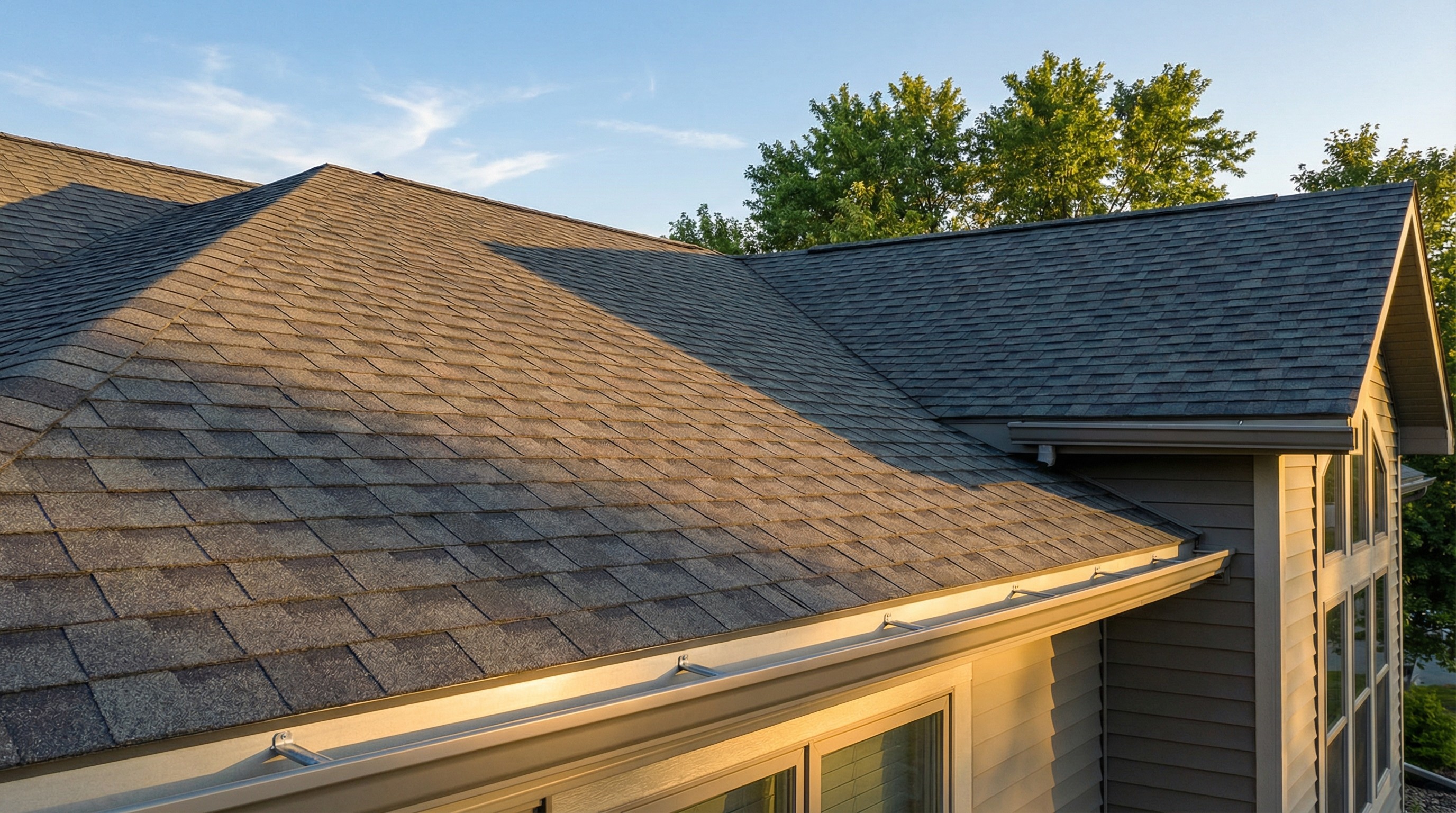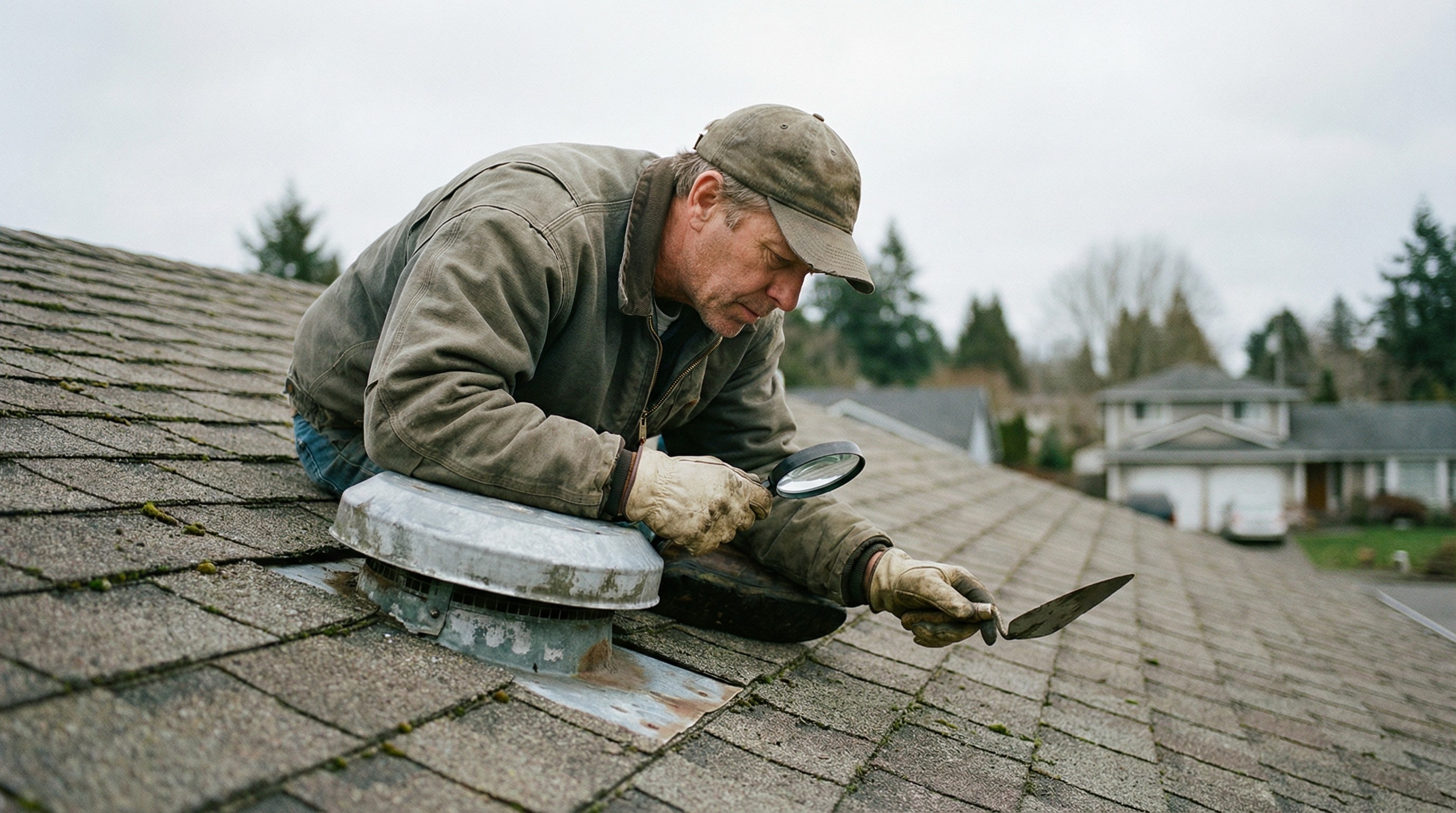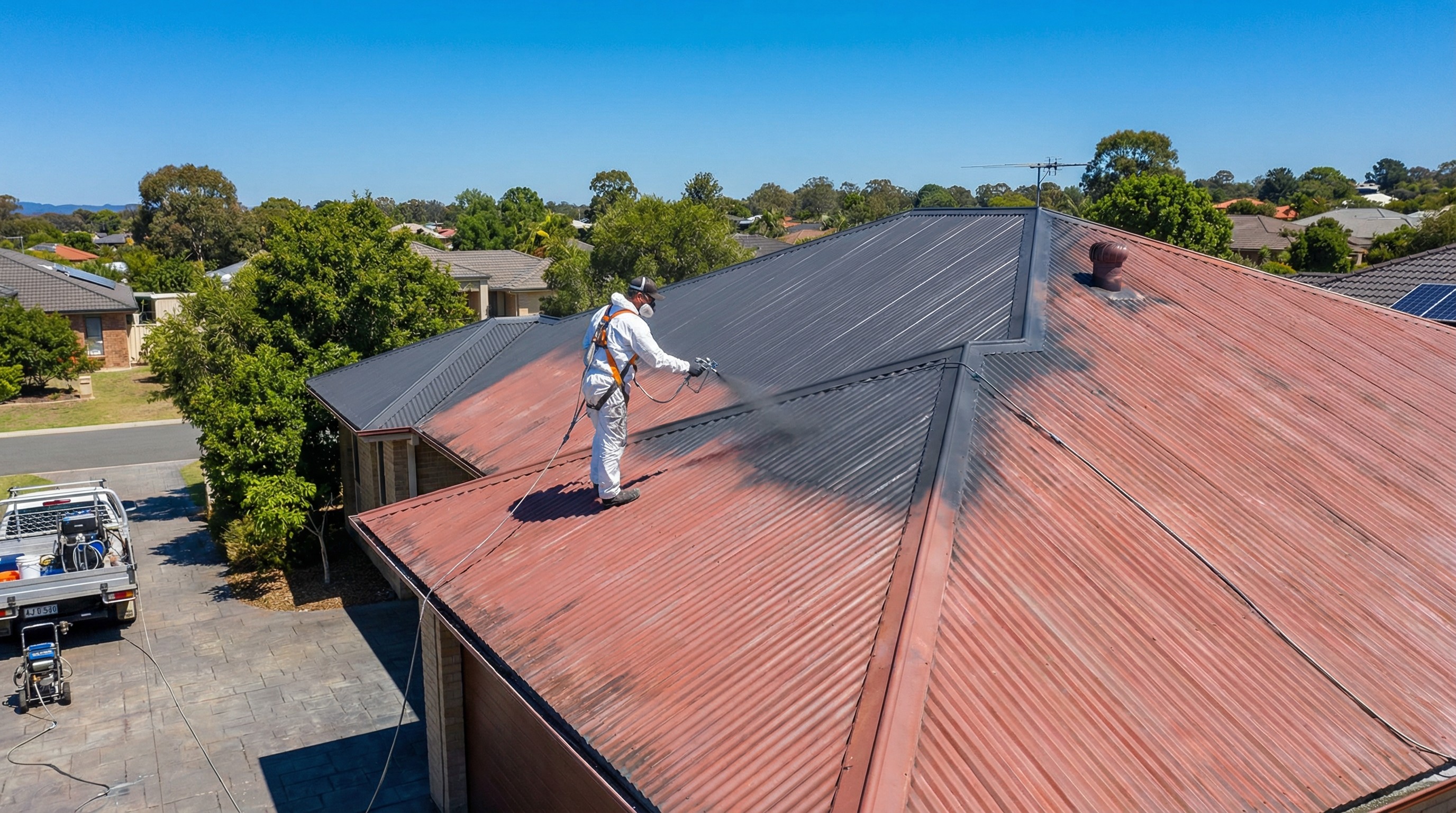Roof Lifespan by Material: When to Replace Your Roof
Your roof isn't going to last forever, but knowing when it will actually need replacement can vary significantly depending on your roofing material and local conditions, typically ranging from 15 to over 50 years.
Material matters more than anything else when it comes to roof lifespan. Below, we'll break down how long each roofing type typically lasts, what factors speed up aging, and the warning signs that tell you replacement is coming.
How Long Does a Roof Last
Most roofs last somewhere between 15 and 50 years. The range is wide because the answer depends almost entirely on what your roof is made of, where you live, and how well it's been cared for over time.
If you have asphalt shingles, which most American homes do, you're typically looking at 20 to 30 years. Metal roofs often last 40 to 70 years. Tile and slate can go much longer, sometimes exceeding 100 years with proper maintenance.
Here's the thing: your roof doesn't come with an expiration date stamped on it. Two decades is a rough estimate, but several other factors determine your roof's actual lifespan.
Roof Life Expectancy by Material
Different roofing materials age at different rates. The table below gives you a quick reference, and then we'll walk through each type in more detail.
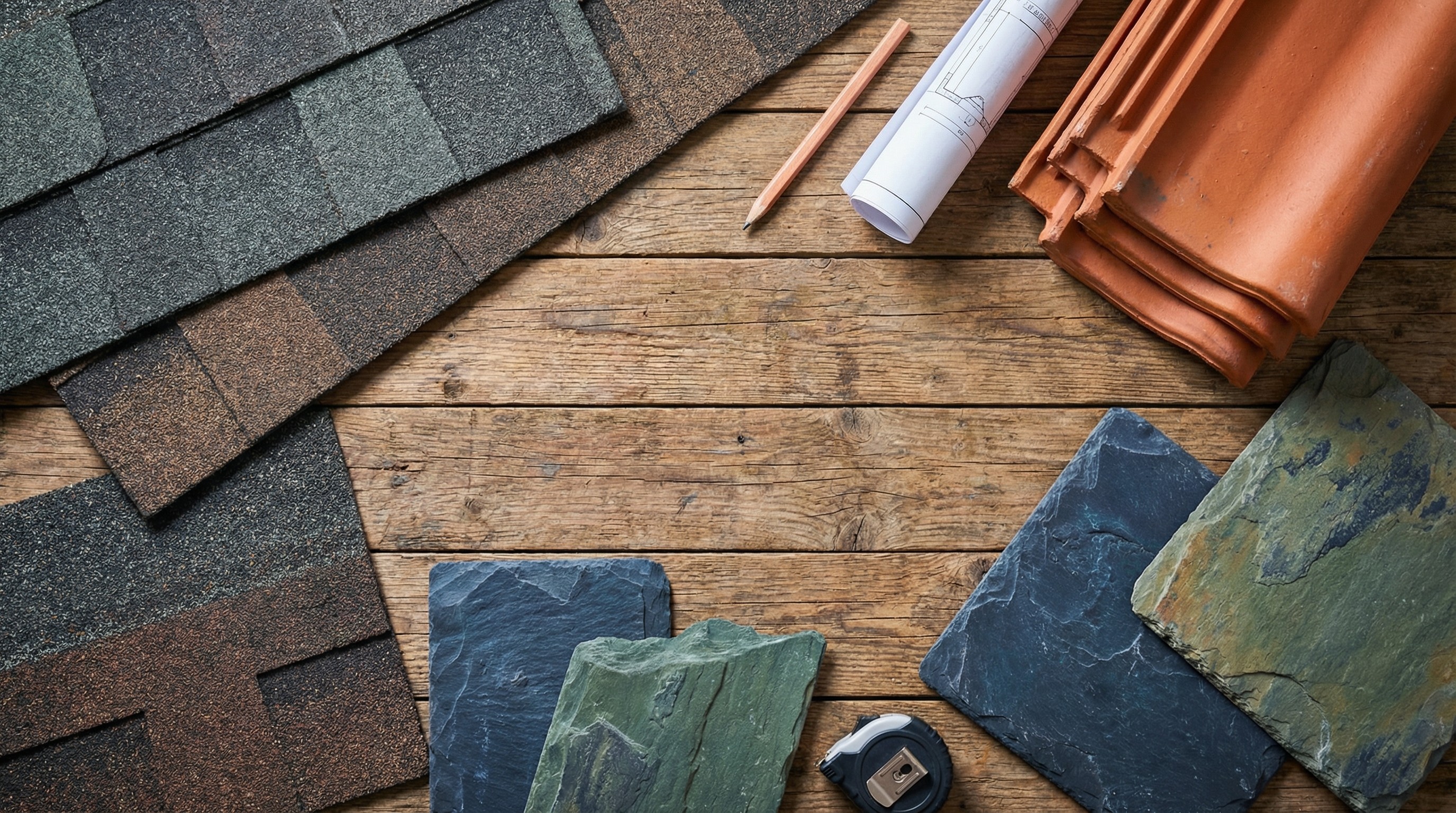
Roofing Material | Expected Lifespan | Best For |
|---|---|---|
3-Tab Asphalt Shingles | 15 to 20 years | Budget-conscious replacements |
Architectural Asphalt Shingles | 25 to 30 years | Most homes, good balance of cost and durability |
Metal Roofing | 40 to 70 years | Long-term homeowners, harsh weather areas |
Clay and Concrete Tile | 50 to 100 years | Hot, dry climates |
Slate | 75 to 200 years | Historic homes, premium budgets |
Wood Shakes | 20 to 40 years | Aesthetic appeal in dry climates |
Flat Roofs (TPO/EPDM) | 15 to 30 years | Low-slope roofs, modern architecture |
Asphalt shingle roofs
Asphalt shingles cover more American homes than any other roofing material. They're affordable, easy to install, and available in a wide range of colors and styles.
Two main types exist. 3-tab shingles are the basic, flat variety that typically last 15 to 20 years. Architectural shingles, sometimes called dimensional or laminate shingles, are thicker and more textured. They generally hold up for 25 to 30 years.
Climate affects asphalt more than most materials. In areas with intense sun, the shingles dry out and crack faster. In humid regions, algae growth becomes a problem. And if your attic doesn't ventilate properly, heat builds up underneath and essentially cooks the shingles from below, shortening their life considerably.
Metal roofs
Metal roofing has become increasingly popular, and the appeal is straightforward: a metal roof can easily last 40 to 70 years with minimal maintenance.
Standing seam metal roofs, where long panels connect with raised vertical seams, tend to outlast metal shingles or tiles. The seams create fewer entry points for water. Metal also handles extreme weather well, including high winds, hail, and heavy snow loads.
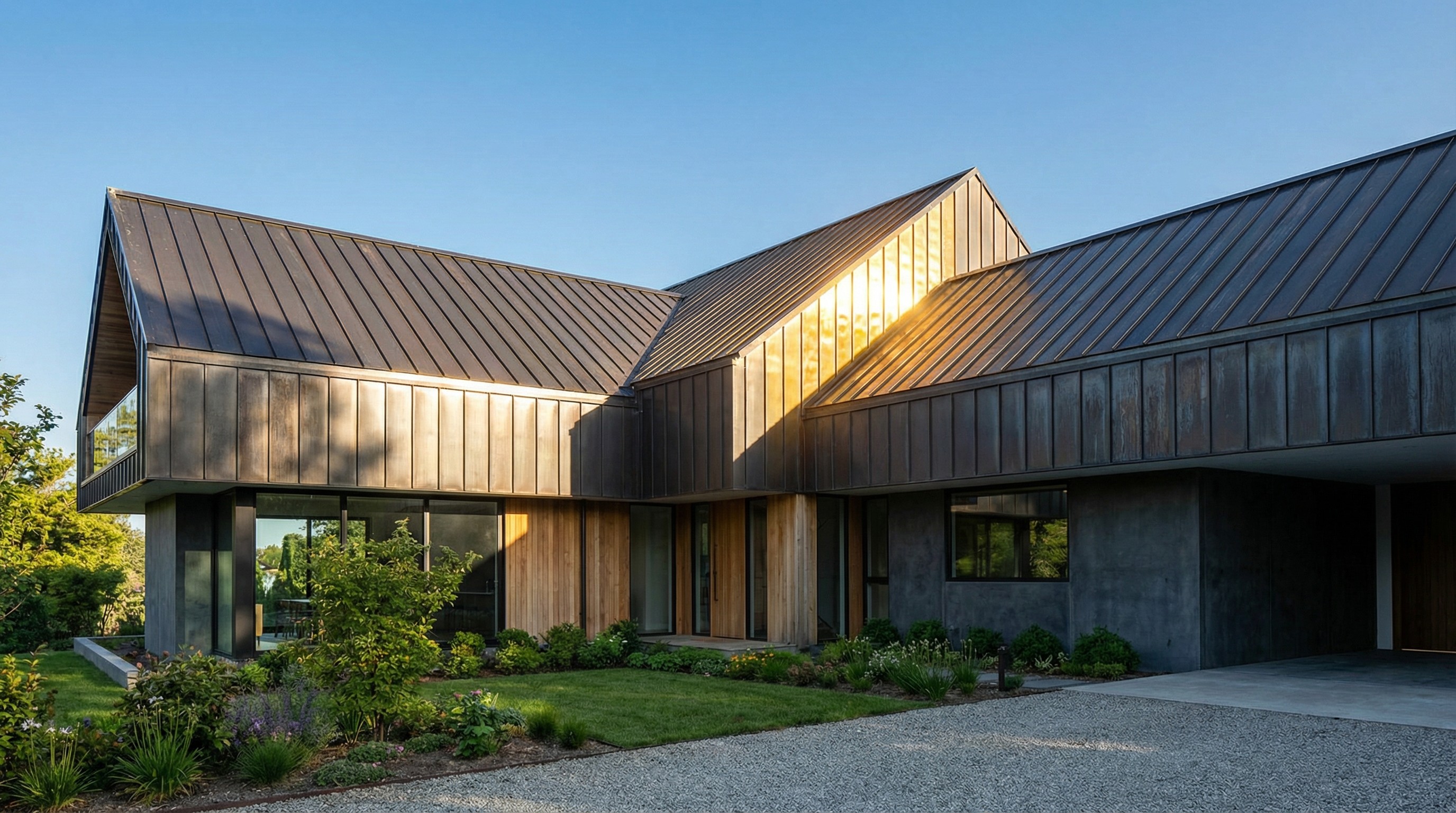
The primary consideration with metal roofing is the higher upfront investment. But if you plan to stay in your home long-term, the math often works out in metal's favor since you may never need another roof.
Clay and concrete tile roofs
Clay and concrete tiles are the heavy, curved tiles you see on Mediterranean and Spanish-style homes. The tiles themselves are remarkably durable, often lasting 50 to 100 years.
Here's what's important to understand about tile roofs: While the tiles last decades, the underlayment beneath them does not. Underlayment is the waterproof barrier between the tiles and your roof deck, and it typically wears out every 20 to 30 years. Replacing underlayment means removing and reinstalling all the tiles, which adds significant cost.
Tile roofs also weigh considerably more than other options. Your home's structure has to be strong enough to support them, which isn't always the case with older houses.
Slate roofs
Slate is natural stone, and it's the longest-lasting roofing material available. A quality slate roof can last 75 to 200 years. Some slate roofs in Europe have been protecting buildings for centuries.
The main drawbacks are the significant upfront cost and the need for specialized installation. Not every roofer knows how to work with slate properly, and mistakes during installation lead to cracked tiles and leaks. Slate also weighs even more than clay tile, so structural considerations apply here too.
For most homeowners, other materials offer better value for typical roofing needs.
Wood and cedar shake roofs
Wood shakes offer a natural, rustic look that many homeowners find appealing. Cedar is the most common choice because it naturally resists rot and insects better than other woods. A well-maintained wood roof typically lasts 20 to 40 years.
Wood roofs require more ongoing maintenance than other materials to reach their full lifespan potential. It's vulnerable to moisture, which can cause rot. It can harbor moss and algae. And unless treated with fire-resistant coatings, wood poses a fire risk, which is why some areas have building codes that restrict or prohibit wood roofs entirely.
Flat roofs
Flat roofs aren't completely flat. They have a slight pitch to allow water drainage, but it's much less than a traditional sloped roof. Common flat roof materials include:
TPO (thermoplastic polyolefin): A single-ply white membrane that reflects heat well
EPDM: A synthetic rubber membrane, often black, known for durability
Modified bitumen: An asphalt-based material applied in layers
Flat roofs typically last 15 to 30 years. Because water doesn't run off as quickly, pooling becomes a concern. Standing water accelerates wear and increases leak risk. Regular inspections matter more with flat roofs than with steeply pitched ones.
Factors That Affect How Long Your Roof Lasts
Material sets the baseline, but several other factors determine whether your roof reaches its full potential or falls short.
Climate and weather
Weather is probably the single biggest variable outside of material choice. Intense summer heat causes shingles to expand and contract repeatedly, leading to cracks over time. Freezing temperatures bring ice dams, which form when snow melts and refreezes at the roof's edge, forcing water underneath shingles.
Hail can damage any roof in a single storm. High winds lift shingles and expose the underlayment. Heavy rain tests every seam and flashing point. If you live somewhere with frequent severe weather, your roof will age faster than the same roof in a milder climate.
Installation quality
A roof is only as good as the crew that installed it. Proper flashing around chimneys, vents, and skylights matters enormously. So does correct nail placement, adequate sealing, and following the manufacturer's specifications.
This is exactly why roofquotes.com pre-vets local contractors for experience and reputation-so you don't have to worry about installation quality affecting your roof's lifespan.
Roof ventilation
Ventilation refers to airflow in your attic space. Proper ventilation allows hot air to escape in summer and prevents moisture buildup in winter. Without it, heat gets trapped and damages shingles from below, while moisture can lead to mold and rot in the roof deck.
Many shingle warranties actually require adequate ventilation. If your attic feels extremely hot in summer or shows signs of moisture or mold, the ventilation system may be inadequate.
Material grade
Not all shingles are created equal, even within the same category. Entry-level asphalt shingles might last 15 years, while premium architectural shingles from the same manufacturer could last 30 years or more.
When comparing quotes, pay attention to the specific products being proposed. A slightly higher upfront cost for better materials often pays off over time.
Roof slope
Steeper roofs shed water and debris more effectively than low-slope roofs. Water runs off quickly, leaves and branches slide down, and snow doesn't accumulate as heavily. All of this reduces wear.
Low-slope and flat roofs hold water longer, creating more opportunities for leaks and material degradation. If you have a low-slope roof, regular inspections become even more important.
Signs Your Roof Needs to Be Replaced
Catching problems early can save you from expensive interior water damage. Here are the warning signs that indicate your roof may be nearing the end of its useful life.
Curling, cracked, or missing shingles
Curling happens when shingle edges turn upward or the middle starts to cup and buckle. This indicates the shingles are drying out and losing their ability to keep water out.
A few missing shingles after a major storm can often be repaired. But if shingles are coming loose regularly or you're seeing widespread cracking and curling, the roof is telling you something.
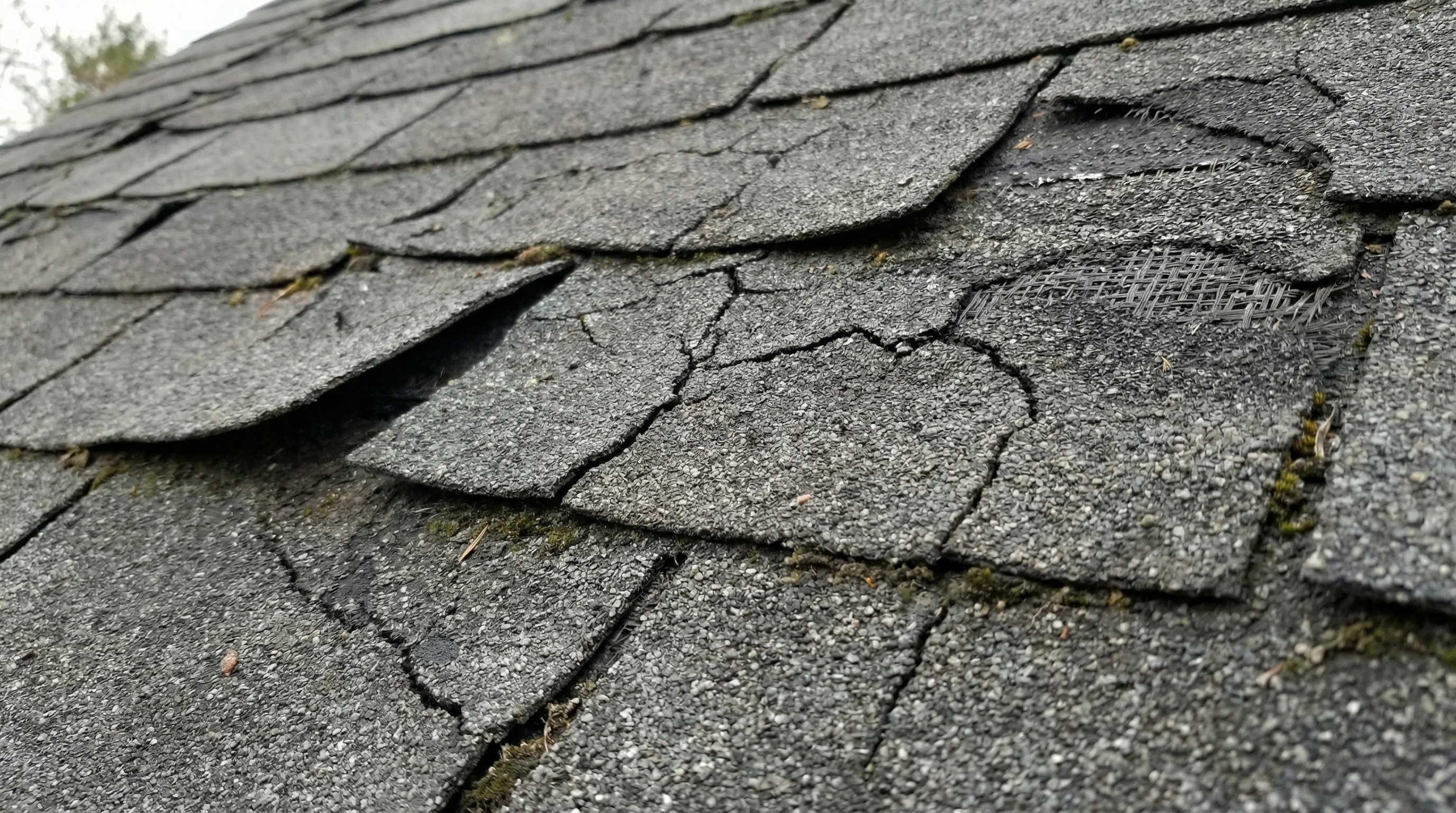
Granules collecting in gutters
Asphalt shingles are coated with small, sandpaper-like granules that protect them from UV rays. Some granule loss is normal on brand-new roofs as loose manufacturing residue washes away. But heavy granule accumulation in your gutters on an older roof signals that the shingles are wearing out.
Once shingles lose their granule coating, they deteriorate quickly. The underlying asphalt becomes exposed to direct sunlight and breaks down.
Sagging or structural damage
A sagging roofline is serious. It often indicates water damage to the roof deck, the wooden sheathing beneath your roofing material, or problems with the underlying structure itself.
If you notice any sagging, get a professional inspection promptly. This isn't a wait-and-see situation.
Leaks or water stains inside
Water stains on your ceiling or walls mean moisture is getting through somewhere. By the time you see stains inside, the problem has usually been developing for a while.
One tricky aspect: leaks don't always appear directly below the damaged area. Water can travel along rafters and beams before dripping down, making the actual source difficult to locate without professional help.
Age beyond expected lifespan
Even a roof that looks fine from the ground may be nearing the end of its useful life. If your roof is approaching or past its expected lifespan based on material type, a professional inspection can tell you how much time you realistically have left.
How to Make Your Roof Last Longer
Regular maintenance extends roof life significantly. Here's what actually makes a difference:
Annual inspections: A professional inspection once a year catches small problems before they become expensive repairs. Spring or fall is ideal timing.
Clean gutters: Clogged gutters cause water to back up under shingles, leading to rot and leaks. Cleaning them twice a year helps.
Trim overhanging branches: Trees drop debris, hold moisture against the roof, and can cause physical damage in storms. Keep branches several feet away from the roof surface.
Prompt repairs: Replacing a few shingles or resealing flashing costs far less than dealing with water damage from a delayed repair.
Adequate ventilation: If your attic runs hot or shows moisture, adding ridge vents or soffit vents can extend your roof's life.
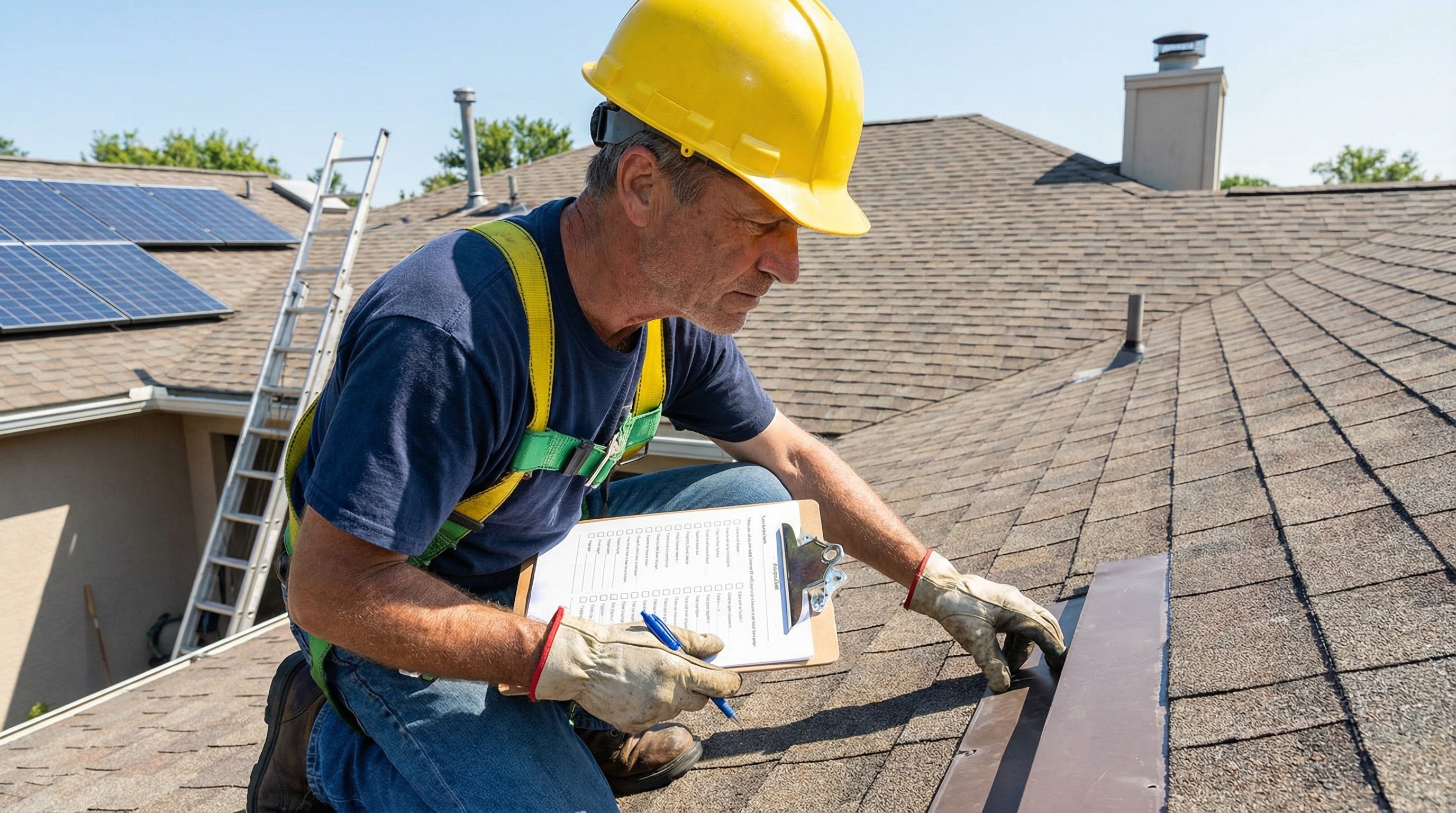
How Roof Warranties Compare to Actual Roof Life
Roof warranties can be confusing, and the numbers on them don't mean what most people assume.
Manufacturer warranty: Covers defects in the roofing materials themselves, like premature cracking or granule loss
Workmanship warranty: Covers installation errors, provided by your contractor
What's typically excluded: Storm damage, normal wear, lack of maintenance, problems caused by poor ventilation
A 30-year warranty doesn't guarantee your roof will last 30 years. It means the manufacturer will cover certain defects during that period. Many warranties are also prorated, meaning coverage decreases as the roof ages. Read the fine print before assuming you're protected.
What to Do When Your Roof Needs Replacement
If your roof is showing signs of age or damage, the next step is gathering information so you can make a confident decision.
Start by getting multiple quotes, ideally three to five from different contractors. Ask for line-item pricing that shows exactly what you're paying for: materials, labor, tear-off, disposal, and any extras. This makes comparing quotes much easier.
Verify that contractors are licensed, insured, and have solid reviews from local homeowners. Be cautious of anyone who pressures you to sign immediately or offers a price dramatically lower than everyone else.

